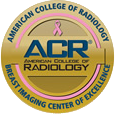Image-Guided Needle Biopsy of The Breast
A needle core biopsy is the easiest and most reliable way to prove whether a suspicious finding in the breast is cancer or not. A small tissue sample is obtained with a special biopsy needle which is later examined under a microscope by a pathologist for diagnosis. Most biopsy procedures take 20-30 minutes. Gentle local anesthesia is used (a numbing injection) which is typically very well tolerated and makes the procedure painless. After the tissue samples, or needle cores, are obtained a tiny titanium marker is placed into the biopsy site. Finally, a few mammogram views are taken to show the location of the marker and the targeted biopsy site. The radiologist receives the diagnosis from the pathologist the next day and discusses the results with the patient the day after the biopsy procedure. Occasionally it takes two or three days to receive biopsy results.
There are three ways, or imaging modalities, which a radiologist may use to guide a needle directly to the suspicious finding in the breast depending on the easiest way to see it. These are: stereotactic-guidance (using mammography or x-ray, imaging), ultrasound-guidance, and MRI-guidance.

